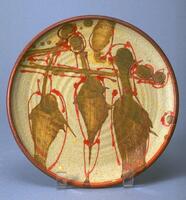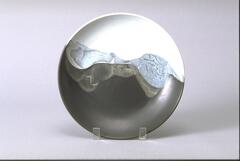42 UMMA Objects
42 UMMA Objects
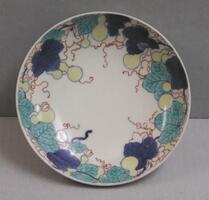
Artist Unknown, Nabeshima ware, Japan
Plate with gourd and vine design (one of five with 1964/1.100 and 102-104)
1700 – 1732
Museum purchase made possible by the Margaret Watson Parker Art Collection Fund
1964/1.101

Shibata Zeshin
Plate with Floral Design, one of five
1879 – 1890
Museum purchase made possible by the Margaret Watson Parker Art Collection Fund
1968/2.56
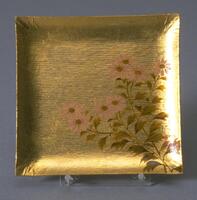
Shibata Zeshin
Plate with Floral Design, one of five
1879 – 1890
Museum purchase made possible by the Margaret Watson Parker Art Collection Fund
1968/2.60

Nicola da Urbino
Dish (Tondino) with portrait of a young woman and grotesque decoration
1526
Museum Purchase
1965/2.79
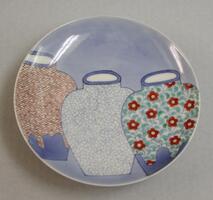
Artist Unknown, Nabeshima ware, Japan
Plate with three vase design (one of five with 1964/1.100-103)
1700 – 1732
Museum purchase made possible by the Margaret Watson Parker Art Collection Fund
1964/1.104

Artist Unknown;John A. Foster
Plate with reddish-brown glaze and white underglaze
1930 – 1940
Gift of John A. Foster
1943.268
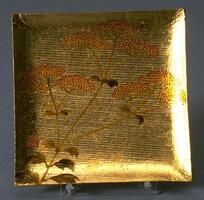
Shibata Zeshin
Plate with Floral Design, one of five
1879 – 1890
Museum purchase made possible by the Margaret Watson Parker Art Collection Fund
1968/2.57
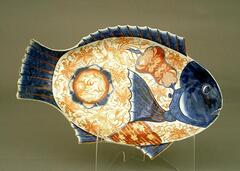
Japanese (Japanese (culture or style))
Imari fish plate with paintings of phoenix and hollyhock
1845 – 1855
Gift of the William T. and Dora G. Hunter Collection
2002/2.13
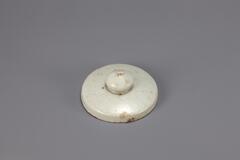
Korean (Korean (culture or style))
Burial Set (15 plates, 16 bowls and 6 lids)
17th century
Gift of Ok Ja Chang and the Chang Family
2009/2.79.1
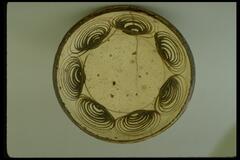
Japanese (Japanese (culture or style))
Seto Ware Oil Plate
1615 – 1868
Gift of Dr. Walter R. Parker
1942.5
Loading…
